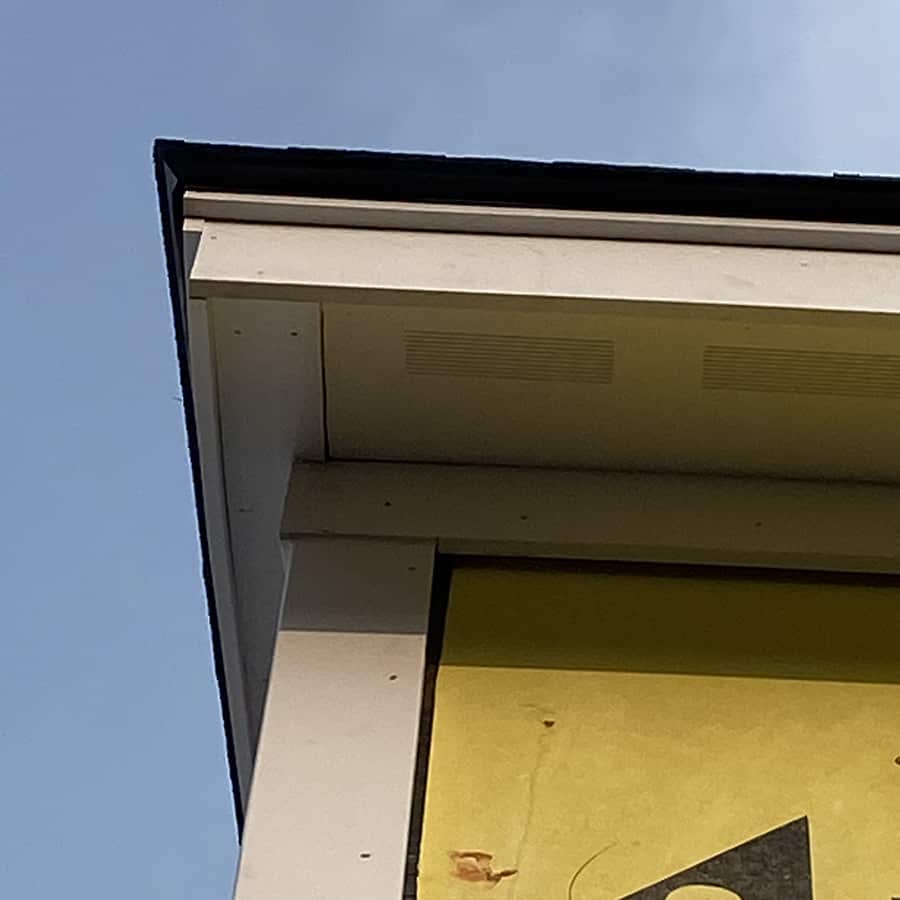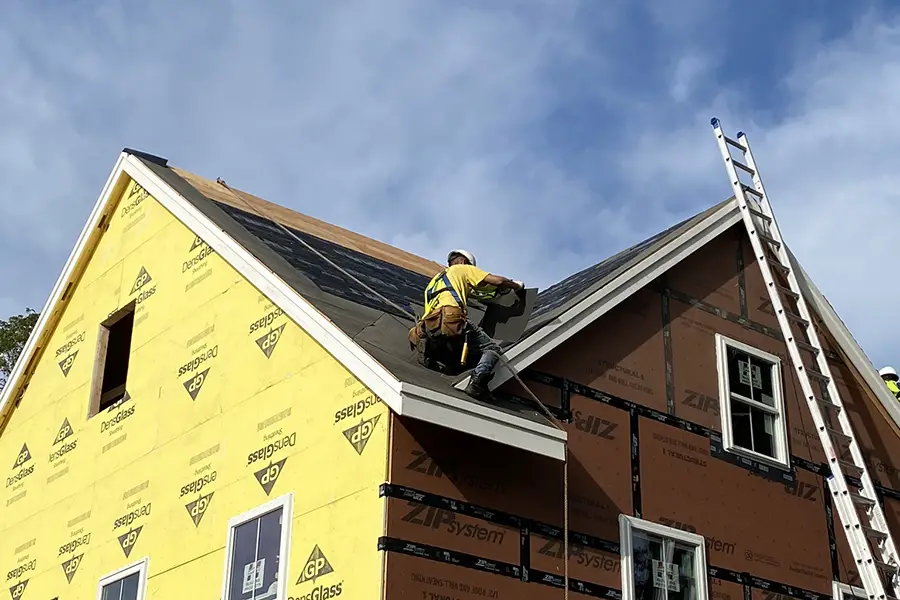A lot of folks tackling bathroom remodels or installing a bathroom exhaust system in a new bathroom or old home are faced with this conundrum. Some roofs aren’t as hospitable for bathroom exhaust venting, and soffits seem like the next best alternative. This article will explore why you should or shouldn’t vent a bathroom fan through a soffit, and offer some tips for how best to approach the project!
- Pros and Cons
- Soffit Venting Downsides
- Installation tips
- Insulate the ductwork
- Be thoughtful about ducting material
- Make sure your duct is the right size for your exhaust fan
- Be sure to observe code
- Run the duct in as straight and short a line as possible
- Use a soffit vent designed for this purpose
- Make sure the vent is installed to the manufacturer’s specifications
- Closing
Pros and Cons
Benefits of Soffit Venting
- Safer for DIY Installers – Installing a traditional roof vent might be a bit challenging without professional equipment for some DIY homeowners and some roofs. Soffit venting offers a safer approach from either inside the attic or outside on a ladder that does not require roof-walking!
- Shorter duct length – The argument can be made (based on the location of the bathroom and the pitch of the roof) that venting through the soffit can be shorter, and thus more efficient than roof ducting
- Better for snowy climates – Again, depending on roof pitch, if your area sees a lot of snow, a roof vent may become clogged, frozen, or even drip back into the house with significant snowfall
- Roof integrity – If you have an older roof or a roof with more challenging material, it may not be best to start cutting new holes into it. A soffit vent offers a solution that doesn’t negatively impact the integrity of your roof or introduce opportunities for leaks.
- Room Heat Preservation – Heat rises, of course. So naturally, if the heat from your room is venting out laterally, it will just remain trapped in the ducting until the fan is activated, instead of continuing to rise out of the home through a roof vent.
- Less backdraft than side vent – Due to the often short distance between exterior and interior openings, side-wall vents can have a strong backdraft. Venting through insulated ducting to a soffit vent does not have this problem.
Soffit Venting Downsides
- Less safe for DIY installers – Once you get above one story, working on a ladder may be more difficult for your average homeowner
- Worse for snowy climates – As the warm, moist, air works its way towards the soffit vent, it will cool and can likely condense on the vent or soffit. This moisture will freeze and begin to collect, causing inefficient airflow in the best-case scenario, and icicles that block the soffit vent in the worst-case scenario.
- Introducing Moisture to Attic – When a soffit vent is exhausting moist air next to a soffit vent that is drawing in outside air to cool the attic, there is a potential that some of the bathroom exhaust air can enter will enter the attic. How problematic this might be depends on how close the soffit vents are to one another, but generally a light breeze is enough to dissipate the moisture.
- Aesthetics – If not properly installed and operated, soffit vents can be prone to drips and thus icicles and rust, which can cause unsightly cosmetic blemishes to your home
- A straight duct path can be challenging – If the duct is not installed in a straight line to the soffit vent, it can create an environment for condensation. Vertical roof vents pose no such threat.

Installation tips
When approaching the project of venting a bathroom exhaust fan to a soffit vent, the following tips will help ensure a successful installation:
Insulate the ductwork
This is a pro-tip for both hot and cold climates! In cold climates, insulated ducting will ensure that the hot steamy air reaches the exterior of the building without the opportunity to cool and leave condensation inside the ducting. In hot climates, steamy but air-conditioned air hitting a hot pipe could also create an environment for condensation to form.
Be thoughtful about ducting material
Flexible metal ducting is common, and will likely work just fine in warmer climates. However, as PVC is not a very good thermal conductor, it may help with insulation and be a better option for cold climates.
Make sure your duct is the right size for your exhaust fan
This explains itself!
Be sure to observe code
Common sense tells us to not install a soffit exhaust vent directly above that bathroom’s intake window, and the IRC (International Residential Code) requires that an exhaust vent terminate “not less than 3 feet in any direction from openings into buildings.”
Run the duct in as straight and short a line as possible
Any time the exhaust duct turns, there is an opportunity for the air to slow, become trapped, or create condensation. Straight, downward-sloping ducting is preferred, as any condensation that does occur will have a greater opportunity to leave the duct, rather than stagnate. Additionally, downward-sloping ducting minimizes the risk of condensation re-entering the interior of the room or damaging the ceiling.
Use a soffit vent designed for this purpose
Make sure you find a soffit vent that will accept the ductwork to ensure exhaust air and moisture is not leaking into your attic. Vents like the ones below are built for this purpose.
Make sure the vent is installed to the manufacturer’s specifications
I know, reading directions is “uncool.” But in this case, missing a step could have a significant impact on your home’s safety and integrity, so thoroughly reading the provided information is key! Without due diligence, the soffit vent could be installed backward, or incorrectly sealed. This would potentially allow moisture back into the attic, causing a bigger and costlier problem to fix down the road! Also, they usually come with a template to make cutting that much easier, so be sure to check the box.
Closing
Overall, ducting a bathroom exhaust fan through the soffit is a relatively common and approachable option for ventilation. Make sure to be thorough with your preparation, measure three times cut once, and be aware of the IRC’s requirements as well as any local additions or alterations to the code.
Let us know if you’ve tackled this project in the past, and any challenges you faced or feedback you have for others!







It’s clear that venting a bathroom fan through a soffit is a viable option, but it requires careful consideration. The fan’s power, noise level, and ease of installation are crucial. The Panasonic FV-0511VQC1 and BV Ultra-Quiet fan are excellent choices for their quiet operation and high CFM. However, ensure the ductwork is insulated, the ducting material is suitable for your climate, and the duct size matches your fan. Also, observe local building codes and aim for a straight, short duct line to prevent condensation and maintain efficiency.